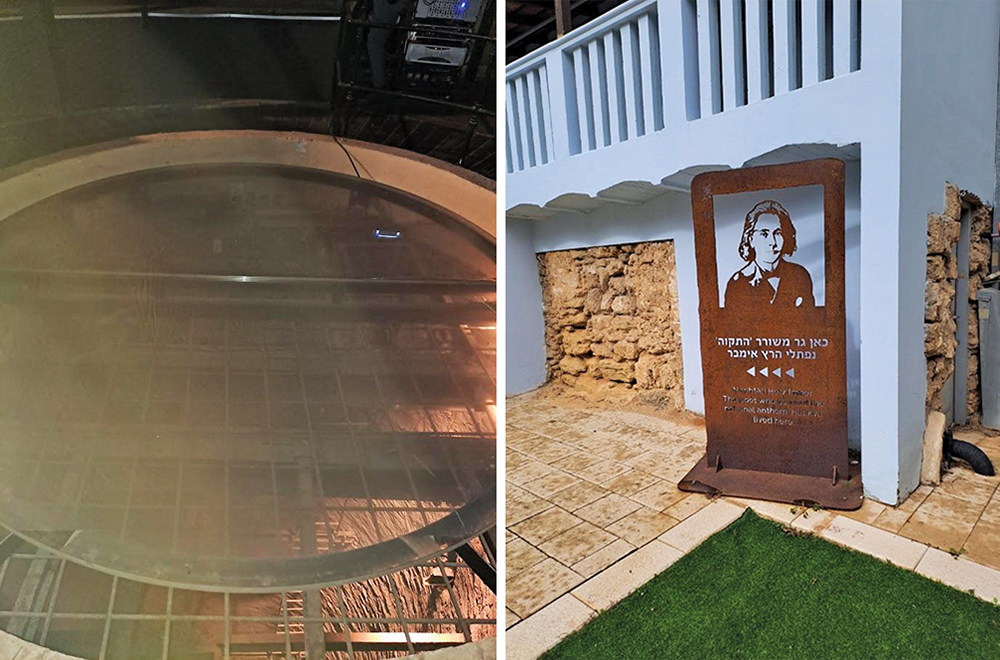
(Article is based on material developed for Rishon L’Tzion tourism as well as a special tour for guides of Rishon L’Tzion run by the local municipality.)
Living in the land of Israel has never been easy. The early settlers who returned to their ancient homeland faced many challenges and obstacles along the way. Rishon L’Tzion was the first Jewish settlement to be established in the modern aliyah movement. It was founded in 1882 by 17 idealistic religious families who were fleeing the antisemitism of Eastern Europe. Although most of their counterparts in Europe set sail for America, they decided to return to the Holy Land. As we walk along the main streets of the old Rishon L’Tzion, we can get a feel for the challenges these pioneers faced and the spirit that helped them to overcome.
The first settlers were faced with a barren land covered with thorns and without any source of water. When they discovered Ayun Kara, they were initially excited and thought they had found a supply of water. They were subsequently disappointed to find that it was merely a moldy swamp full of mosquitoes and water that was not drinkable. In their quest for a water supply they realized that they must begin to look for an underground source and began digging a well. This project became more complex than they had realized, and Baron Edmond de Rothschild stepped in and funded the digging. After seven months of intense digging, the famous cry of “מצאנו מים!” (“We found water!”) could be heard as water was discovered 48 meters underground. Visitors will be impressed by the deep well which they can see in Rishon L’Tzion accompanied by an excellent multimedia presentation about how it was dug. (And I won’t spoil the surprise at the end.)

Religious institutions were of paramount importance to the early settlers of Rishon L’Tzion. The first mikvah was built adjacent to the well. In 1884, construction of the first synagogue began at the peak of the hill in the center of the settlement. After some delays due to complications from the Ottoman government, and again with the help of Baron Rothschild, the synagogue was completed in 1889. That is the year תרמ”ט on the Jewish calendar. The Hebrew year of its inauguration is proudly displayed atop the synagogue structure. Visitors can go inside and see this quaint, small European-style synagogue that has been beautifully preserved. One interesting feature of this synagogue is a small charity box embedded in the wall. There is a small slot to put in money, and it can then be opened with a key. Above the box are written the Hebrew words “צדקה מתן בסתר ” (“charity, a gift in secrecy”). One of the highest forms of charity, according to the Rambam, is to give privately so that the poor man does not need to be embarrassed in front of his beneficiary.
Rishon L’Tzion was “first” in many ways. It was in this synagogue that the first Hebrew preschool was housed. In the Rishon L’Tzion Museum, we can learn more. Rishon L’Tzion was also the home of the first Hebrew school where instruction was completely in Hebrew. It housed the first Hebrew orchestra and also the precursor to the Jewish National Fund, the קרן הקיימת לישראל.
In the museum of Rishon L’Tzion we can view a multimedia presentation about the precursor to the Israeli flag that was first designed in Rishon L’Tzion in 1885 in honor of the yishuv’s (settlement’s) third anniversary. Interestingly, this flag had four blue stripes, two on top and two on the bottom, similar to the stripes of a talit.
Another important landmark to visit in Rishon L’Tzion is the basement where Naftali Hertz Imber lived for a short while. He is the author of a nine-stanza poem entitled “Tikvateinu” (“Our Hope”). This poem was later amended and put to music, and became known as the Hatikva, Israel’s national anthem. (It’s interesting to note the changes made to Imber’s poem give the anthem less religious connotation. Although Imber’s poem read “לשוב לארץ אבותינו, to return to the land of our forefathers,” in the anthem we sing “להיות עם חופשי בארצינו, “to be a free people in our land.”
As we walk down the Pioneers’ Way of Rishon L’Tzion, we can connect with their challenges, their successes and their incredible spirit. May God give us the strength to overcome our current challenges in our Holy Land!
Hava Preil is an enthusiastic licensed Israeli tour guide. She grew up on the Upper West Side of Manhattan and holds an MA in Judaic studies. Hava has developed and taught accredited courses in Tanach and Jewish Ethics for Naaleh/Woodmont College and Cybersem. She currently lives in Givat Ze’ev, Israel with her family. Hava can be reached at IL:054-844-1579, USA: 845-391-0438 or at [email protected]. Visit her new website, Hava Preil Tours, at https://havapreiltours.com. Hava is currently offering virtual tours of various sites in Israel—a perfect activity for your school, synagogue or youth group.












